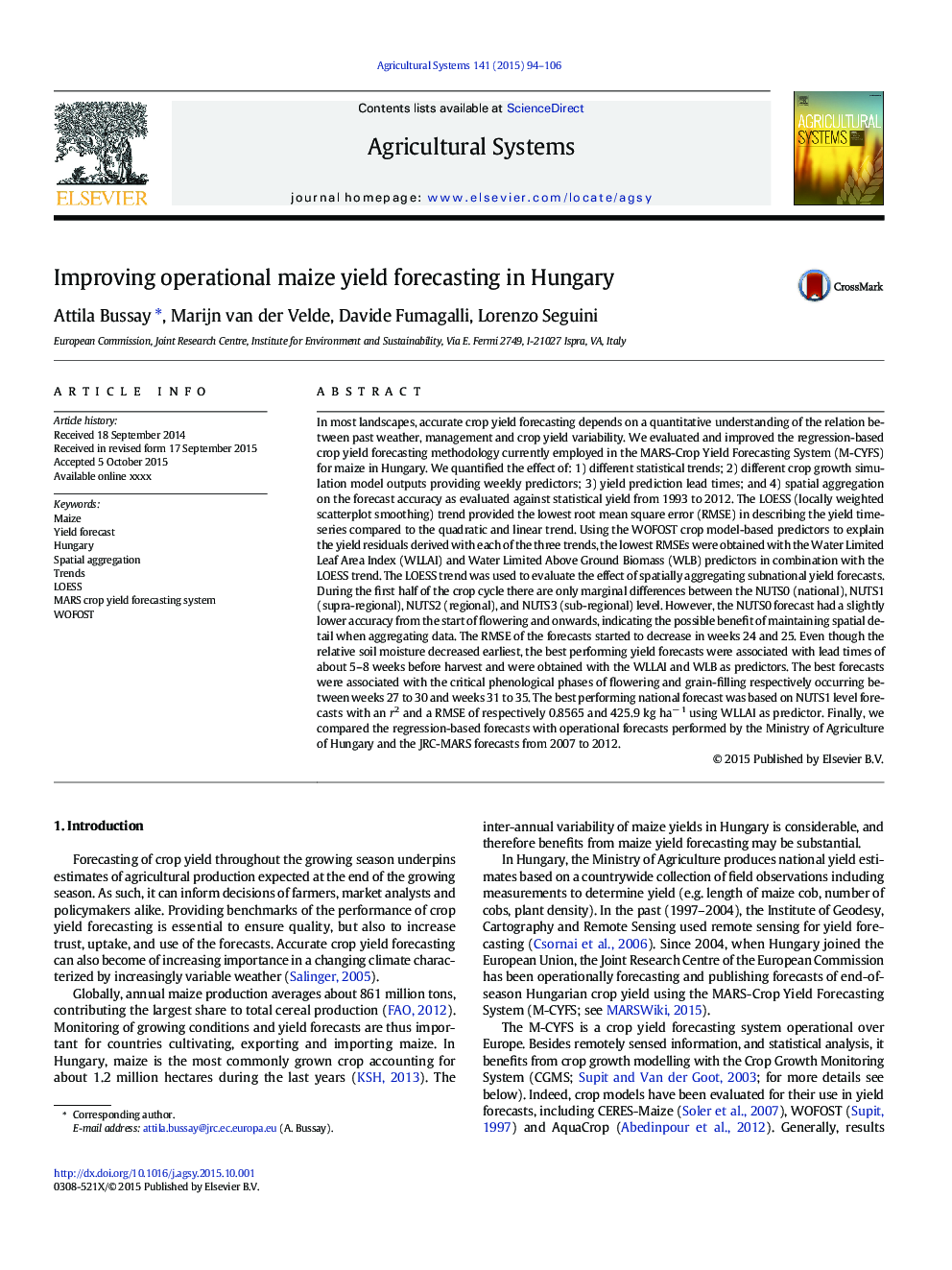| Article ID | Journal | Published Year | Pages | File Type |
|---|---|---|---|---|
| 6368430 | Agricultural Systems | 2015 | 13 Pages |
Abstract
In most landscapes, accurate crop yield forecasting depends on a quantitative understanding of the relation between past weather, management and crop yield variability. We evaluated and improved the regression-based crop yield forecasting methodology currently employed in the MARS-Crop Yield Forecasting System (M-CYFS) for maize in Hungary. We quantified the effect of: 1) different statistical trends; 2) different crop growth simulation model outputs providing weekly predictors; 3) yield prediction lead times; and 4) spatial aggregation on the forecast accuracy as evaluated against statistical yield from 1993 to 2012. The LOESS (locally weighted scatterplot smoothing) trend provided the lowest root mean square error (RMSE) in describing the yield time-series compared to the quadratic and linear trend. Using the WOFOST crop model-based predictors to explain the yield residuals derived with each of the three trends, the lowest RMSEs were obtained with the Water Limited Leaf Area Index (WLLAI) and Water Limited Above Ground Biomass (WLB) predictors in combination with the LOESS trend. The LOESS trend was used to evaluate the effect of spatially aggregating subnational yield forecasts. During the first half of the crop cycle there are only marginal differences between the NUTS0 (national), NUTS1 (supra-regional), NUTS2 (regional), and NUTS3 (sub-regional) level. However, the NUTS0 forecast had a slightly lower accuracy from the start of flowering and onwards, indicating the possible benefit of maintaining spatial detail when aggregating data. The RMSE of the forecasts started to decrease in weeks 24 and 25. Even though the relative soil moisture decreased earliest, the best performing yield forecasts were associated with lead times of about 5-8 weeks before harvest and were obtained with the WLLAI and WLB as predictors. The best forecasts were associated with the critical phenological phases of flowering and grain-filling respectively occurring between weeks 27 to 30 and weeks 31 to 35. The best performing national forecast was based on NUTS1 level forecasts with an r2 and a RMSE of respectively 0.8565 and 425.9 kg haâ 1 using WLLAI as predictor. Finally, we compared the regression-based forecasts with operational forecasts performed by the Ministry of Agriculture of Hungary and the JRC-MARS forecasts from 2007 to 2012.
Related Topics
Life Sciences
Agricultural and Biological Sciences
Agricultural and Biological Sciences (General)
Authors
Attila Bussay, Marijn van der Velde, Davide Fumagalli, Lorenzo Seguini,
